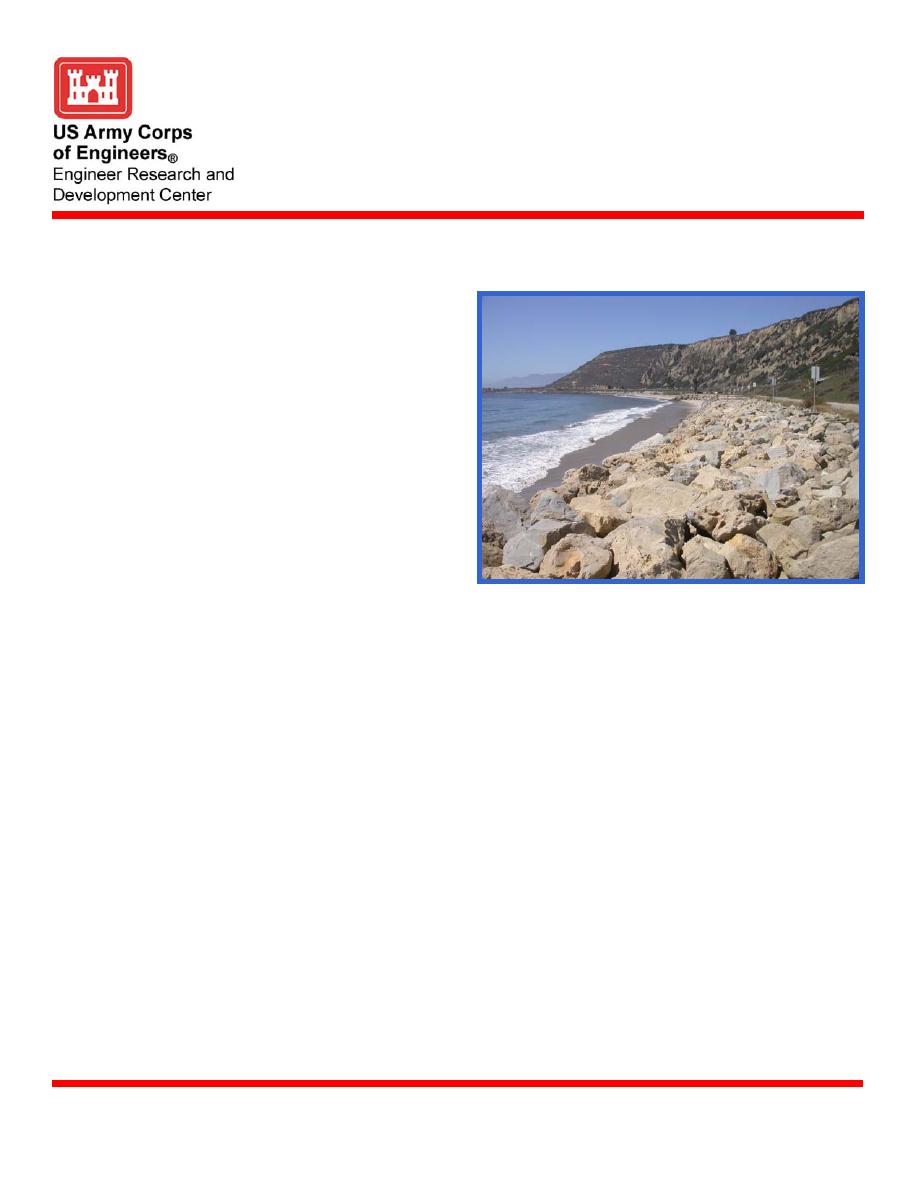
National Erosion Control Development and Demonstration
Program (Section 227)
Oil Piers, Ventura Co., California
Description
Oil Piers is located in northern Ventura County along Highway 101. The name Oil Piers is
in reference to the recently removed Mobil Oil piers that were demolished between
January and September 1998.
The beach is backed by a
rock revetment and highway
embankment. Beach access is
provided along an access road
that runs parallel to the
Pacific Ocean and via
pedestrian underpasses under
Highway 101. Historically,
the offshore area has been an
important surfing area.
Project site lands are owned
by the county of Ventura
(landward of Highway 101)
and California State Lands
Commission (seaward of
Highway 101) and are open
Rock revetment and highway embankment by beach,
and accessible to the public
Oil Piers, California
on equal terms.
Issue
The goal of the demonstration project is not necessarily to advance the existing shoreline
seaward of the adjacent shores, but to stabilize the shoreline and retain a placed beach-fill
volume.
Technology
A design has been selected using sand-filled geotextile containers placed as an offshore
reef. The reef will be placed at an angle to the shore so that waves will rotate slightly to
approach the beach in a more shore-normal direction. By reducing the angle of waves
reaching the beach, the longshore sediment transport will be reduced. The selected design
will also provide recreational benefits and improved marine habitat. The reef will be
oriented such that waves will break over the reef in a manner conducive to surfing, and the
reef will quickly become covered with marine growth providing habitat for many types of
marine life. Factors that were considered when looking for a design were as follows:
The design should include an innovative design and initial placement of suitable
beach-fill material. Sand sources may be natural and/or artificial.
The design should preserve and/or enhance existing environmental resources and
recreation and improve shore protection.
The design should consider configuration alternatives for future modification.
U.S. Army Engineer Research and Development Center
May 2005
www.erdc.usace.army.mil



 Previous Page
Previous Page
